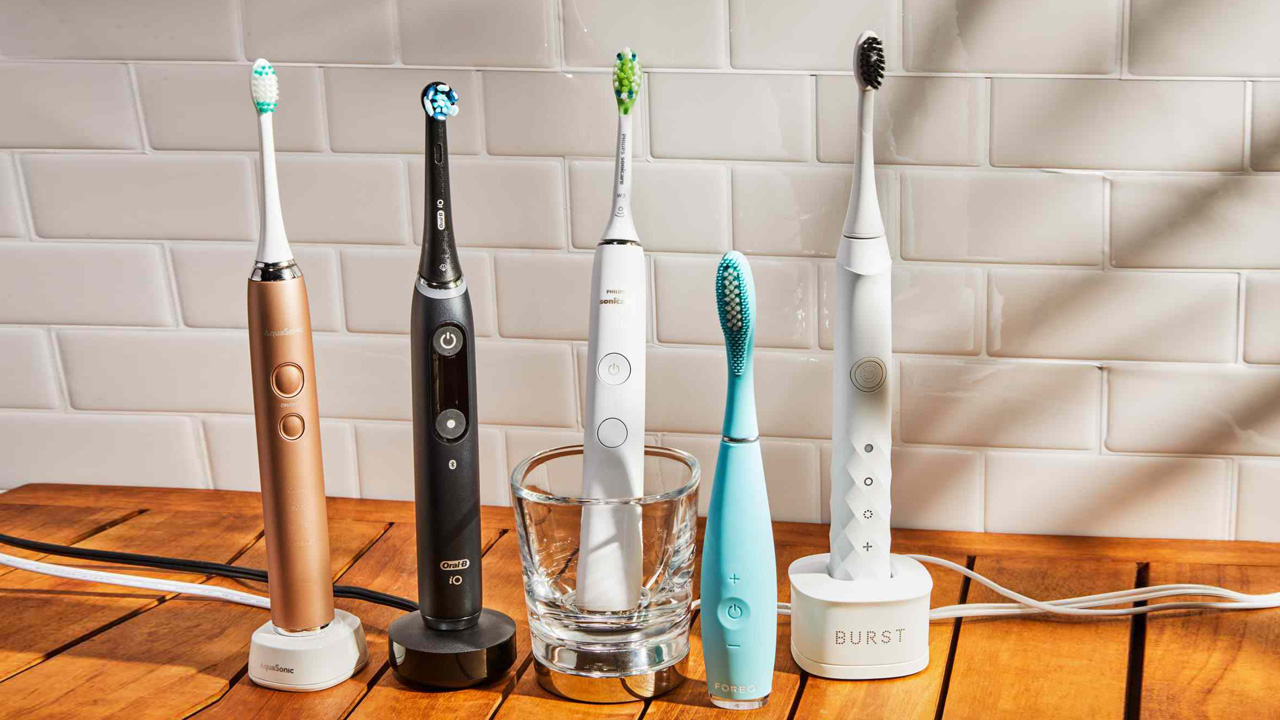Health
What is Smart Electric toothbrush?
An electric toothbrush is a toothbrush that makes rapid automatic bristle motions, either back-and-forth oscillation or rotation-oscillation (where the brush head alternates clockwise and counterclockwise rotation), in order to clean teeth. Motions at sonic speeds or below are made by a motor. In the case of ultrasonic toothbrushes, ultrasonic motions are produced by a piezoelectric crystal. A smart electric toothbrush is usually powered by a rechargeable battery charged through inductive charging when the brush sits in the charging base between uses.
Electric toothbrushes can be classified according to the frequency (speed) of their movements as power, sonic or ultrasonic toothbrushes, depending on whether they make movements that are below, in or above the audible range (20–20,000 Hz or 2400–2,400,000 movements per minute), respectively.
History
The earliest example of an electric toothbrush was first produced by Tomlinson Moseley. Sold as the Motodent, a patent was filed by his company, Motodent Inc. on December 13, 1937. In Switzerland in 1954 Dr. Philippe Guy Woog invented the Broxodent. Woog’s electric toothbrushes were originally manufactured in Switzerland (later in France) for Broxo S.A. The device plugged into a standard wall outlet and ran on line voltage. Electric toothbrushes were initially created for patients with limited motor skills and for orthodontic patients (such as those with braces).
Types
Electric toothbrushes can be classified according to their type of action:
- Side to side vibration, which has a brush head action that moves laterally from side to side.
- Counter oscillation, which has a brush action in which adjacent tufts of bristles (usually six to 10 in number) rotate in one direction and then the other, independently, with each tuft rotating in the opposite direction to that adjacent to it.
- Rotation oscillation, which has a brush action in which the brush head rotates in one direction and then the other.
- Circular, which has a brush action in which the brush head rotates in one direction only.
- Ultrasonic, which has a brush action where the bristles vibrate at ultrasonic frequencies (> 20 kHz).
- Ionic, which has a brush that aims to impart an electrical charge to the tooth surface with the intent of disrupting the attachment of dental plaque.
For some vibrating toothbrush designs, a brushing technique similar to that used with a manual toothbrush is recommended, whereas with brushes with a spinning head the recommended cleaning technique is to simply move the brush slowly from tooth to tooth.
Electric toothbrushes can also be classified according to the speed of their movements as standard power toothbrushes, sonic toothbrushes or ultrasonic toothbrushes. If the motion of the toothbrush is sufficiently rapid to produce a hum in the audible frequency of human range (20 Hz to 20,000 Hz), it can be classified as a sonic toothbrush. Any electric toothbrush with movement faster than this limit can be classified as an ultrasonic toothbrush. Certain ultrasonic toothbrushes, such as the Megasonex and the Ultreo, have both sonic and ultrasonic movements.
Effectiveness
In 2014, a Cochrane review demonstrated that power toothbrushes remove more plaque and reduce gingival inflammation more than manual toothbrushes.This review showed electric toothbrushes had greater effectiveness over manual ones. For example, plaque build-up and gingival inflammation were reduced by 11% and 6% respectively after one to three months of use. After three months of use, the reduction observed was even greater – 21% reduction in plaque and 11% reduction in gingival inflammation. Although the scale of these differences in a clinical setting remains questionable, other reviews have reached similar conclusions. Another large review of studies also concluded that power toothbrushes were more effective in removing plaque than manual brushes for children. For patients with limited manual dexterity or where difficulty exists in reaching rear teeth, electric toothbrushes may be especially beneficial.
With regards to the effectiveness of different electric toothbrushes, the oscillation rotation models have been found to remove more plaque than manual toothbrushes.More specific studies have also been conducted demonstrating oscillating rotating toothbrush effectiveness to be superior to manual toothbrushes for patients undergoing orthodontic treatment. Notably, only the oscillating rotating power toothbrush was able to consistently provide statistically significant benefit over manual toothbrushes in the 2014 Cochrane Review. This suggests that oscillating rotating power toothbrushes may be more effective than other electric toothbrushes. More recent evidence also supports this as new studies suggest that oscillating rotating toothbrushes are more effective than high frequency sonic power toothbrushes. Overall, oscillating rotating toothbrushes are effective in reducing gingival inflammation and plaque.
Other factors that influence effectiveness amongst electric toothbrushes involve factors such as the amount of time spent brushing and the condition of the brush head. Manufacturers recommend that heads be changed every three months or as soon as the brush head has visibly deteriorated.


